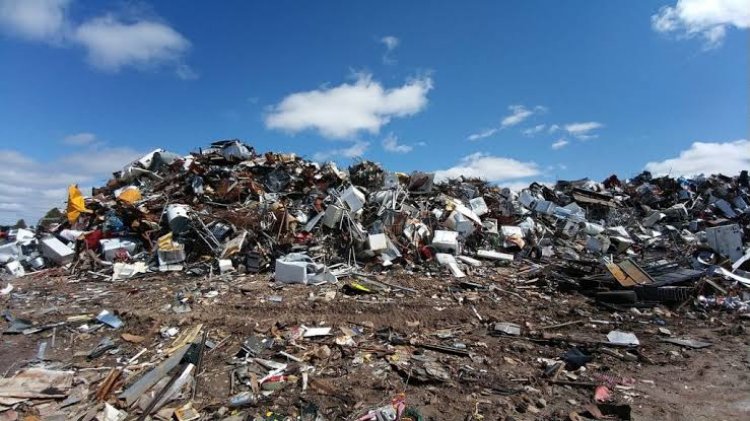Harmful Effects of Waste Management in Nigeria
With a population exceeding 170 million, Nigeria is one of the largest producers of solid waste in Africa. The reckless attitude of humans is now destroying a whole world of living organisms and our very own earth surface taking into note that nature itself is very fragile.

The alarming rate at which humans generate waste has been detrimental to our environment, with our natural habitat feeling a huge impact majorly. The need for censorship in waste disposal should be a clarion call now more than ever as most of these wastes last for years when they are not recycled.
The effect of the generated wastes ranges from its contribution to the worsening climate crisis, detriment to public health, negative impact on wildlife, plants, and the natural environment generally.
According to a recent study, it is estimated that the world generates 2.01 billion tonnes of municipal solid waste annually, with at least 33 percent of such waste not managed in a conducive environment. Waste generated per person per day averages 0.74 kilograms but ranges widely, from 0.11 to 4.54 kilograms.
It is expected that by the year 2050, global waste will rocket by roughly 70 percent to 3.40 billion metric tonnes, more than double the current global population growth over the same period of time.
This is due to a number of factors such as population growth, urbanization, and economic growth. It was also estimated that every year, humans produce millions of tons of waste and this is increasingly becoming a major issue around the globe.
In Nigeria, solid waste management is the most pressing environmental challenge faced by urban and rural areas. With a population exceeding 170 million, Nigeria is one of the largest producers of solid waste in Africa.
Nigeria generates more than 32 million tons of solid waste annually, out of which only 20% to 30% is being collected. Most of the wastes are generated by households and in some cases, by local industries which litter the environment.
Waste prevention and recycling help address global climate change by decreasing the amount of greenhouse gas emissions and saving energy. In essence, the disposal and treatment of waste can produce emissions of several greenhouse gases (GHGs) which contribute to global climate change. The way we manage waste, however, is a very imperative factor that affects climate change. Bad waste management does not only result in litter everywhere, it also affects our environment and results in air and sea population.
It is estimated that by the end of this century, the earth's surface temperature will rise by approximately 2°C, having serious devastating effects on our ecosystems and humans. Changes in the climate have recently become more than obvious, thereby affecting the environment and human life. Climate change is causing prevalent harm to our biological system ranging from environmental hazards to human health, including extreme weather, an increased danger of fire outbreaks, and the spread of infectious diseases.
The reckless attitude of humans is now destroying a whole world of living organisms and our very own earth surface taking into note that nature itself is very fragile. Our energy production, product consumption, and irresponsible waste management contribute directly to climate change by adding carbon-based particles into the air, which are produced during the burning of petroleum products.
It results in the creation of warmer air, with a disastrous greenhouse effect. The landfill which serves as the solution to waste management also has an adverse effect on our environment. The landfill is a waste disposal site where disposable materials are sent and which actually presents a great risk due to the gases created in this open dumpsite. High levels of methane gas and Co2 are generated by waste decomposition.
Much of all the wastes being dumped are not recycled thereby causing adverse effects such as air pollution, finding their way into waterways. Recycling wastes have the potential to radically reduce the impact of the materials on society and the environment.
A new WEF report highlights that a combination of redesign and global protocols that emphasize harmonization between use and available recycling methods could radically reduce the impact of the material estimated at $100 of value for society per ton recycled.
The growing demand for recyclable materials is creating the world's largest recycling effort ever seen in history. These global supply chains constitute a new phenomenon in which several million waste pickers worldwide play a significant role.
Industrial recycling is becoming widespread throughout the world and is expected to increase in extent as manufacturing runs into tighter resource constraints. In an era of rising commodity prices, recyclable materials are in high demand due to their low cost.
Worldwide, in tandem with the recycling effort by the developing and developed countries such as China, Brazil, and India and countries in the west, is the use of waste pickers or scavengers. Millions of scavengers form the basis of this supply chain. It has been estimated that in Africa, Asia, and Latin American cities about 1 percent of the urban population worldwide survived by scavenging. A growing number of experiences in Africa, Asia, and Latin America demonstrate that the formation of scavenging can promote grassroots development, empowerment, poverty reduction, as well as protect the environment and improve industrial competitiveness.
Scavenging activities can reduce emissions of greenhouse gases by recycling inorganic and organic materials. The recycling of inorganic materials by scavengers saves energy.
Lastly, global recycling chains can benefit millions of low-income and vulnerable individuals worldwide, as well as contributing to a more competitive economy and environmental protection in the fight against climate change.

































